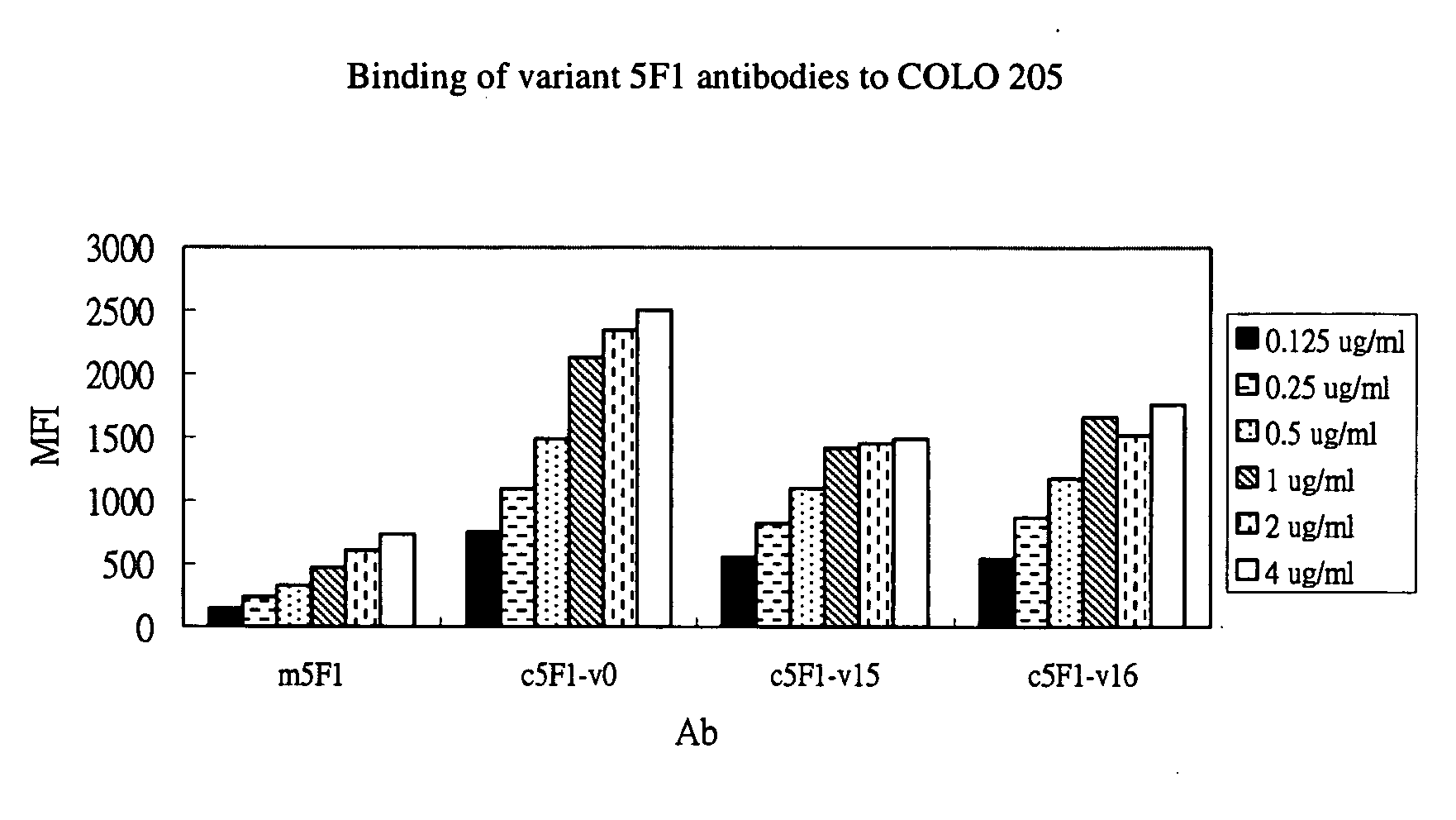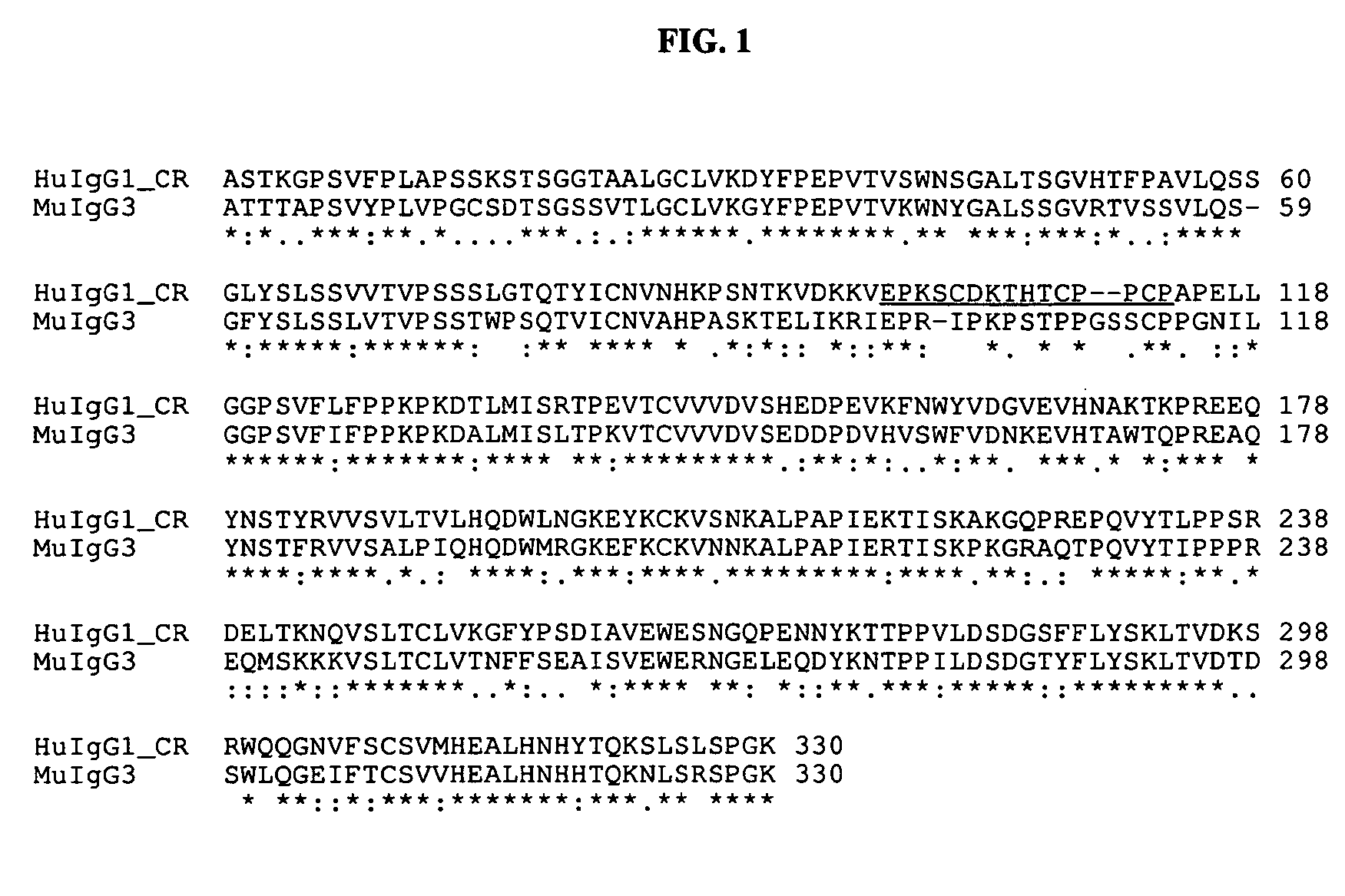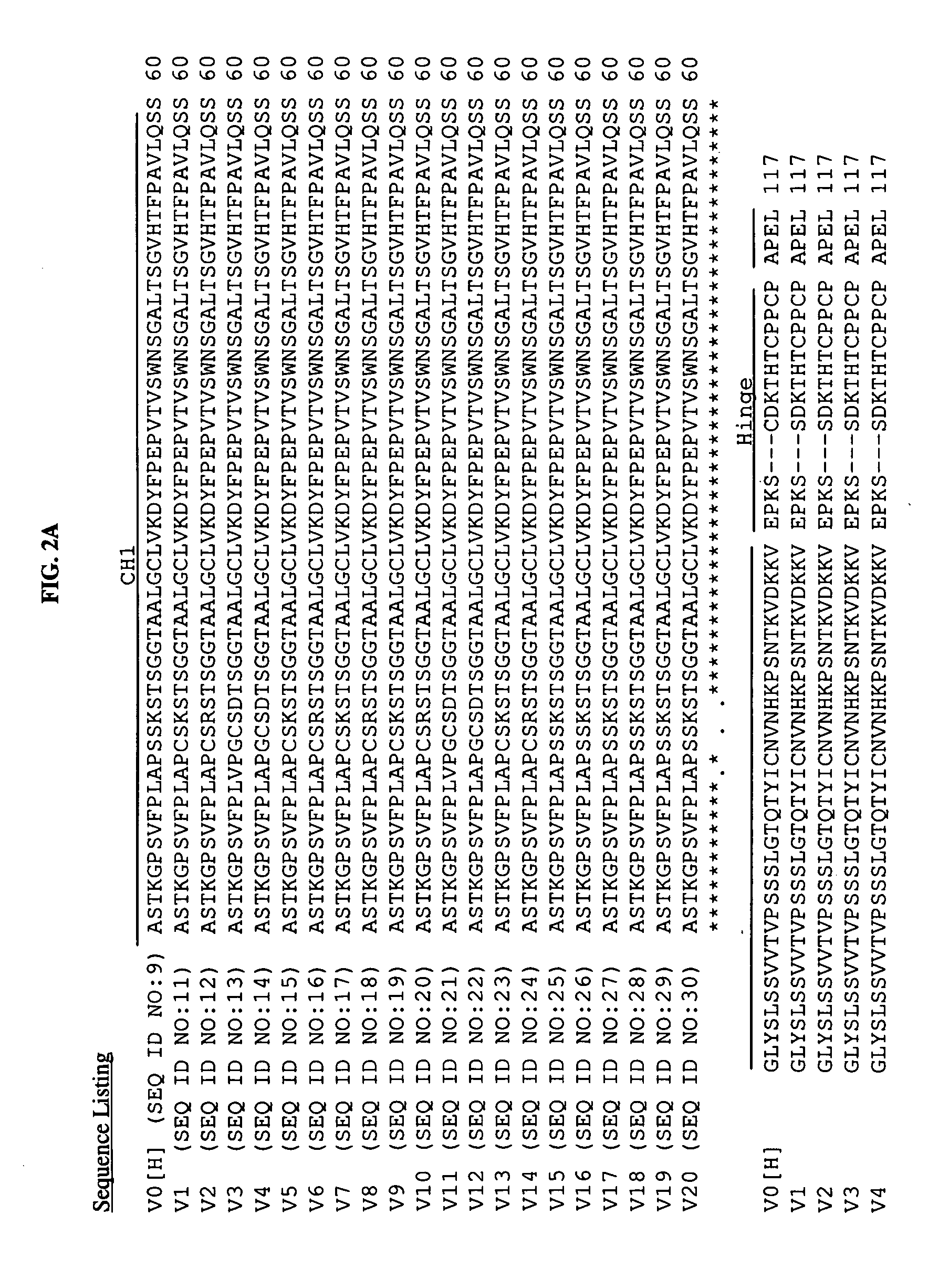Antibodies recognizing a carbohydrate containing epitope on cd-43 and cea expressed on cancer cells and methods using same
- Summary
- Abstract
- Description
- Claims
- Application Information
AI Technical Summary
Benefits of technology
Problems solved by technology
Method used
Image
Examples
example 1
Cloning of the Variable Regions of Light and Heavy Chains of 5F1
[0178]As shown in U.S. application Ser. No. 11 / 811,303 filed on Jun. 7, 2007 (published as U.S. Pub. No. 2008 / 0171043), the variable region cDNAs of 5F1 light and heavy chain variable regions were amplified by PCR, and the synthesized cDNAs were subcloned into pCRII (Invitrogen) for sequence determination. Nucleotide sequences were obtained from several independent clones and analyzed. Identical cDNA sequence from independent clones was chosen to represent the light or heavy chain V region of each antibody. Table 2 below shows the translated amino acid sequences of and nucleotide sequences encoding the light and heavy chain V regions of murine 5F1 (m5F1) and humanized 5F1Vc (h5F1Vc).
TABLE 2Amino acid sequences of the antibodies' variable regions, andnucleic acid sequences encoding the antibodies' variableregions (CDRs are underlined; signal peptide sequences arein italics.)m5F1 heavy chain amino acid sequence (SEQ ID NO...
example 2
Modified Version of chimeric 5F1 Variants
[0179]The isotype of mouse 5F1 antibody is murine IgG3. To obviate the problem of human anti-mouse antibodies (HAMA) response and to have more efficient Fc-dependent functions in humans, a chimeric form of 5F1 (c5F1) antibody (c5F1-v0; for heavy chain: SEQ ID NO.1(VH), NO.9(CH); for light chain SEQ ID NO.2(VL), NO.10(CL), see Table 2 and FIG. 2) was generated by combining the variable (V) region of murine 5F1 antibody with the constant region of human IgG1. The amino acid sequences of heavy chain constant region, which include CH1, hinge, CH2 and CH3 domains, of human IgG1 and murine IgG3, were also compared. From sequence comparison, the CH1-hinge region shows the biggest difference between murine IgG3 and human IgG1 (FIG. 1). As used herein for sequence comparisons, “*” means that the residues in that column are identical in all sequences in the alignment, “:” means that conserved substitutions have been observed, and “.” means that semi-co...
example 3
Introduction of Changes in the Constant Regions of Heavy and Light Chain of the Chimeric 5F1 Antibody
[0180]To facilitate antibody production and purification, pcDNA5-FRT-hIgG1 (generated at AbGenomics) which contains the constant regions of human IgG1 heavy chain and kappa light chain, was used to express chimeric 5F1 (c5F1). The variable regions of m5F1 heavy chain and light chain genes were amplified separately by PCR using primer pairs of m5F1HC-XbaI f / m5F1HC-XbaI r and m5F1LC-XbaI f / m5F1LC-XbaI r (Table 6, primers A3 / A7 and A8 / A9), respectively. The PCR products were digested by XbaI and sequentially inserted into pcDNA5-FRT-hIgG1. The completely assembled c5F1 expression plasmid c5F1 / pcDNA5-FRT-hIgG1, containing both the heavy chain gene and light chain gene of c5F1, was used to express non-modified c5F1 antibody. The same plasmid was also used as the template for the introduction of c5F1 modification.
[0181]PCR-based site-directed mutagenesis with primers (Table 6) introducing ...
PUM
 Login to View More
Login to View More Abstract
Description
Claims
Application Information
 Login to View More
Login to View More - R&D
- Intellectual Property
- Life Sciences
- Materials
- Tech Scout
- Unparalleled Data Quality
- Higher Quality Content
- 60% Fewer Hallucinations
Browse by: Latest US Patents, China's latest patents, Technical Efficacy Thesaurus, Application Domain, Technology Topic, Popular Technical Reports.
© 2025 PatSnap. All rights reserved.Legal|Privacy policy|Modern Slavery Act Transparency Statement|Sitemap|About US| Contact US: help@patsnap.com



